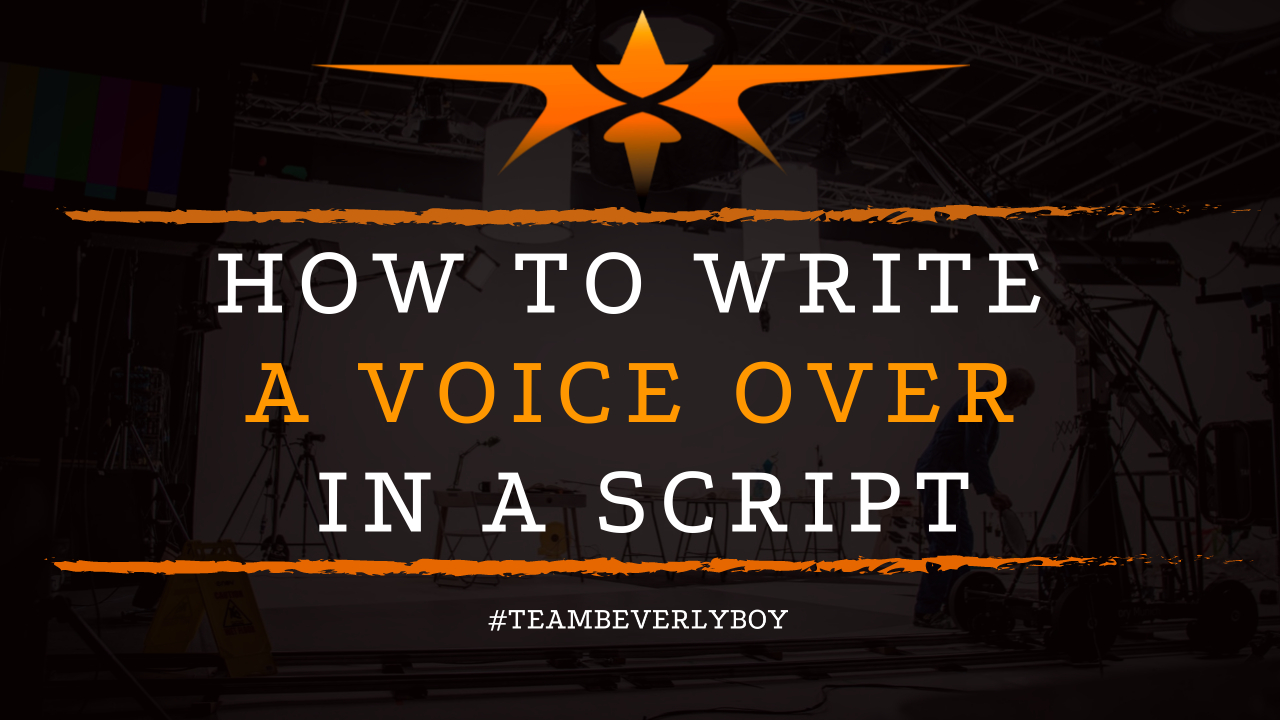
How to Write a Voice Over in a Script
Some of the most memorable moments in film are accompanied by voice-over narration. In fact, despite the fact that many aspiring artists are told to avoid voice overs. And any such dialogue that could potentially muck up the clarity of an otherwise ideal audio scenario. Voice-over narration really is important. And really can be a valuable addition to your script. Learning how to write a voice over in a script is actually really important for filmmakers and aspiring screenwriters.

But, if you’re like the average individual, you grew up writing works that were to be read silently. In fact, most of us are familiar with writing work that will be enjoyed silently. And we tend to struggle a bit when it comes to writing dialogue and voice over dialogue.
It’s simply not what we’re accustomed to writing nor how we’re accustomed to writing. Do you know how to write a voice over in a script? Are you aware of the various ways that dialogue changes when you approach a conversation that takes place between two or more people?
What if you were to sit quietly in the corner of a coffee shop and write down every conversation that you hear? Would you learn something?
Before learning how to write a voice over in a script, make sure that you’re prepared to follow these tips, tricks, and basic steps.
Show as You Tell
The key to excellent voice-over narration is to show AS you tell your audience what it is that you intend for them to know. This doesn’t mean you should just tell them some brief tidbit of information that they’ll soon figure out on their own.
Voice-over narration is more than just delivering the details that the audience must know about your plot.
As you show while you tell, make sure that:
- The voice-over will reveal something important in the story.
- The voice-over is used to highlight a particular character or element of the story.
- The story requires a voice-over. Not to get the screenwriter out of a screenwriting hole, but to deliver key information about the story that has its own meaning.
Write as You Speak
That’s right! You’re going to write your voice over into the script just like you speak. If you need some help knowing how people speak, consider spending a couple of days at a coffee shop, birthday party, busy office, or anywhere that you can easily sit back and listen to conversations unfold.
Listen to how people speak to each other as friends, as family, as co-workers, and as those interacting with minimal knowledge of whom they are speaking to.
Use a short, conversational tone and make sure that you are using short sentences. Write as if you are speaking to someone naturally. If the voiceover doesn’t sound natural, or if you find that there’s any level of a scripted feeling – scratch it! Voice overs should NOT sound scripted.
Grab Inspiration from the Radio
The radio represents a prime example of written voice overs and what they should sound like. If you’re not sure what voice overs sound like on the radio – listen!
The radio gets quickly to the point of what they’re going to say, and they talk as if they’re chatting with you directly. They say what they’ve got to say, it supports the upcoming song or theme of the show, and they use a say-it, explain-it, repeat-it method that works well for them.
It grabs the attention of the audience, piques the curiosity of the audience and keeps them engaged. This is also an ideal means of writing your voice-over in a script. Don’t be afraid to say it, explain it and then repeat it.
How to Write a Voice Over in a Script
Knowing how to write a voice over in a script is really important. Not only should you follow all of the above tips and important considerations when writing a voice over, you should also know how to format the script and the voice over narration that you intend to include.
For example, as you’re writing your script, if you want to include a voice over you’ll use one of the following methods to denote that a voice over is about to take place:
- Include the abbreviation in parenthesis next to the speaker / character name – CHARACTER (V.O.)
- Including the term “VOICE-OVER” in all caps above the narration.
- Include the abbreviation alongside details of “who” the narrator is – FEMALE V.O.
In Summary
As you can see, learning how to write a voice over in a script is really all about the narration and the importance of speaking just as you would if you were holding a conversation with someone in person.
It’s equally important to format your script and announce the voice over with either an abbreviation or the full term “VOICEOVER” so that the cast and crew know that a voice over is occurring.
Doing so will help you to keep your crew abreast of the voice over, provides the information necessary to achieve the voice over, and represents the best way for you to write a voice over in a script that you’re working on.


